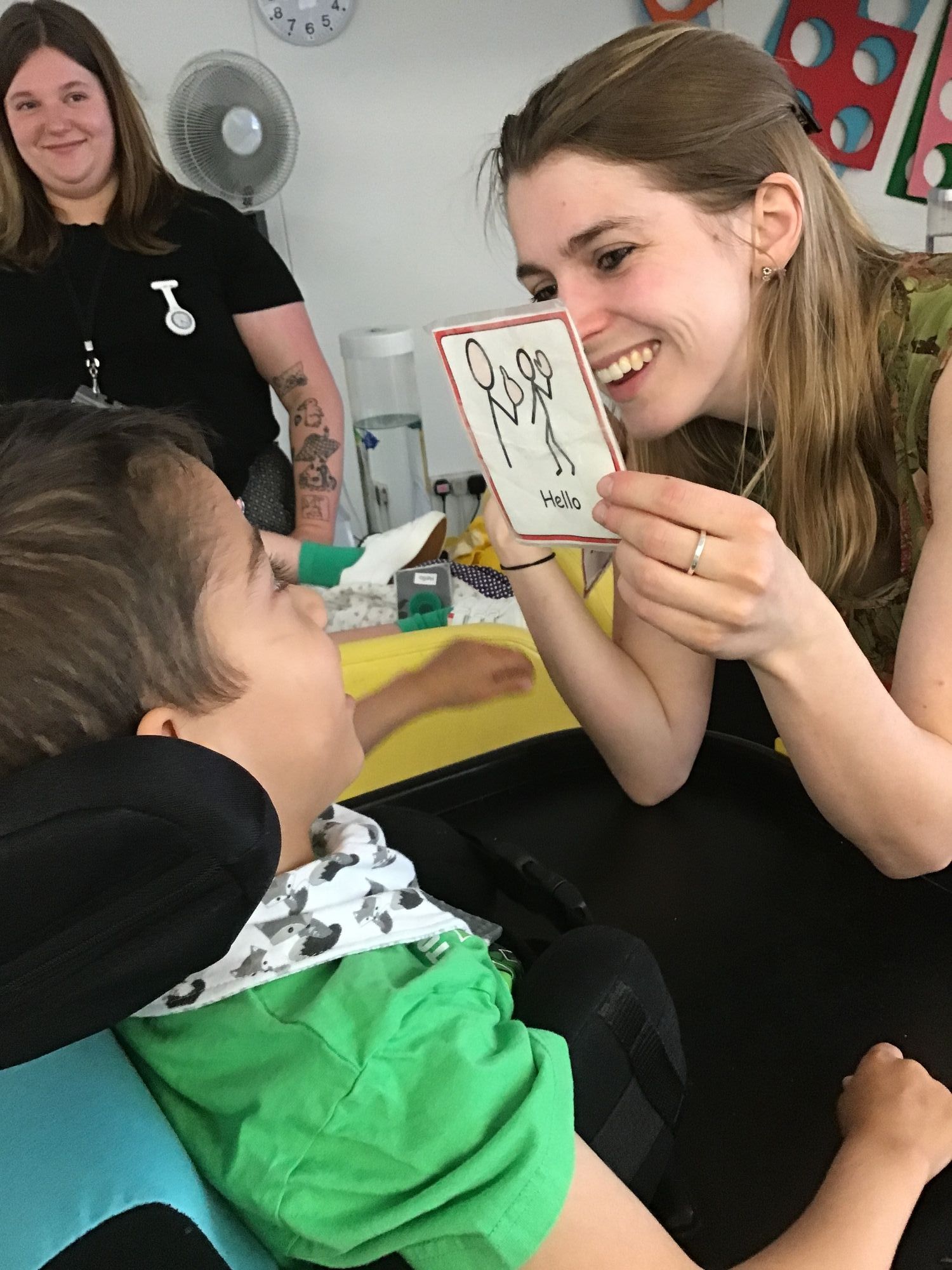Communication & Interaction
Providing Opportunities
A key goal at Saxon Wood School is to help pupils develop their communication skills. Communication is an essential life skill that will help students grow up to be as independent as possible. We build opportunities for communication into every aspect of the pupil’s lives.
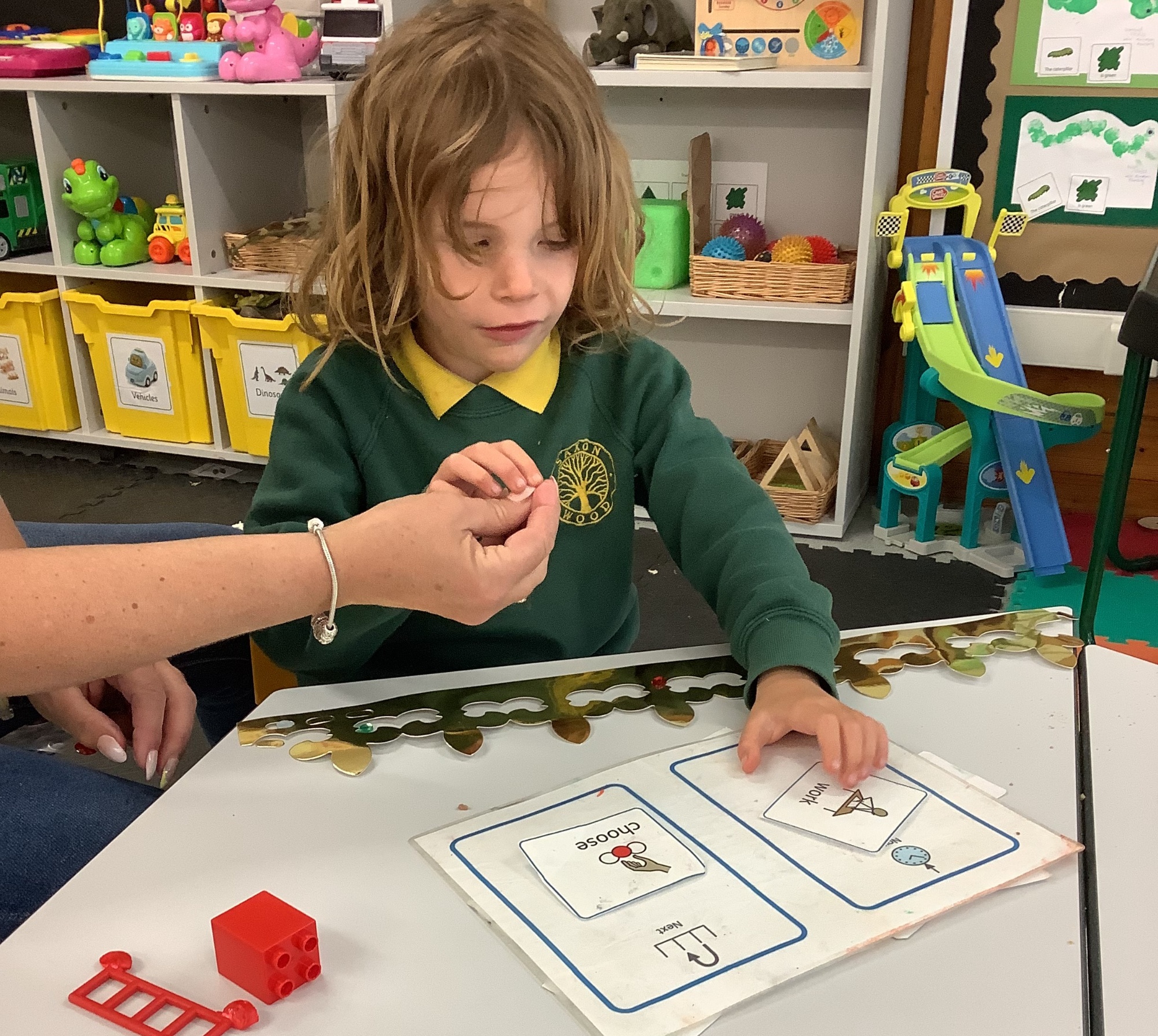
Strategies Used at Saxon Wood School
At Saxon Wood School School we promote the concept of total communication which means we use many different methods in combination to support our student’s understanding of spoken language and their ability to communicate by whichever method is the most successful in different situations.
As well as spoken language, we use a range of alternative and augmentative communication systems (AAC). These systems have been researched and used effectively with children and adults who have learning difficulties, autism and/or sensory or physical impairments.
Strategies Used
- Object cues
- Objects of Reference
- Photographs
- Picture Communication Symbols (PCS)
- Signs and Speech Cues
- Music cues
- Touch Cues
- Creating a Communicative Environment
- Intensive Interaction
- Non-directive communication / Minimal Speech Approach
- Voice Output Communication Aids (VOCAs)
- PECS
- Aided Language Input (ALI)
- Communication Passports
The systems used by individual pupils will be written in their communication passports. The introduction of a new AAC system can be introduced with guidance from the Speech and Language Therapist (SLT) where necessary.
Pupils may use only one system or a combination of two or more systems at any one time to ensure a total communication approach. One or more of them may be supported by information and communication technology.
The Use of Cues at Saxon Wood School
At Saxon Wood School cues are used to support pupil’s understanding of what is going to happen next as part of a structured daily routine (receptive skills). As pupils progress in their use of cues they may be able to use them to make choices about what they would like to do (expressive skills). Cues may include objects, photos, symbols, touch, music or the consistent use of a sign and standardised phrases.
The spoken word should always be used alongside all cues and consideration should be given when labelling activities and places to ensure consistency. Photos and symbols should be labelled to help with consistency of spoken language.
Individualised cues may be used with pupils, but all non-standardised cues will be recorded in their communication passport as part of their communication strategy.
Consideration should be given to pupil’s level of symbolic understanding when deciding upon the appropriate type of cues to be used.
At Saxon Wood School we promote the concept of total communication which means we use many different methods in combination to support our students to understand spoken language and communicate by whichever method is the most successful in different situations.
For example a pupil may understand the spoken word for 'Mum' but may need a sign to understand that an activity is finished and may need a photo of the outdoor area to understand that it is playtime.
Similarly a pupil may have a spoken word that they use for 'Dad' but use a sign for “more” (as this is a relatively easy sign to learn) and make choices of preferred activities using photographs of the real activities.
All staff have an awareness of the above hierarchy and the level of symbolic understanding for individual pupils will be outlined on the Communication Passports displayed on the walls of the classrooms. Then all staff working with students will know when introducing new vocabulary what visual supports will best support the students' understanding.
Why do we use cues?
- To support pupil’s understanding of spoken language and the routine of the day and expectations
- To connect meaning between objects actions and their referents (semantics)
- To ease transitions.
Object Cues (Receptive)
Object cues are real objects which are directly related to or used within an activity for example, a pupil’s own spoon shown to them when it is dinner time, a switch shown to a pupil before starting a switching activity. Examples of other object cues that have been used at Saxon Wood School:
- Pupil’s own cup
- Cooking utensils
- Painting apron
These are not standardised objects but are specific to the activity/event which is about to take place and are represented to pupils prior to the activity as a cue to what is about to happen.
When an activity is finished, the child/ren will be told the activity is finished and Makaton will be signed to complete the activity.
Objects (Expressive)
Objects used within an activity may also be used to help pupils make choices to express themselves or to answer questions. The adult says which do you want or “Where’s the….”and holds up two items for the pupil to look at or reach to point or take.
Objects of Reference
Objects of reference are representational objects which have a symbolic meaning and are used to represent an activity or event, for example a milk bottle top tr represent circle time. Before using objects of reference, assessments will be made of a pupil’s level of symbolic understanding. Object of reference can be useful for pupils with visual impairment who will not be able to use photos, pictures or signing as alternative communication strategies.
Guidelines on using Objects of Reference
The object is the key element of the activity it represents, for example, a cup for drink time.
The object is introduced at the beginning of the activity, remains with the pupil during the activity and is put away at the end of the activity.
Presentation of the object is always accompanied by the spoken word.
Staff should ensure that everyone uses the same object to represent an activity consistently.
Photographs
Photographs provide an important conceptual step between objects and symbols and
- should be used with spoken language. Photos should be taken of:
- motivating objects, for example favourite toys
- objects, for example a photo of a pupil’s cup to indicate time for a drink;
- activities, for example a photo of the swimming pool
- places around school, for example a photo of the dining hall
- events, for example a photo of the school bus to indicate it’s time to go home.
When pupils are familiar with a large range of photographs and as their symbolic understanding develops a symbol-based system can be introduced to support pupil’s access to a wider range of vocabulary.
Picture Communication Symbols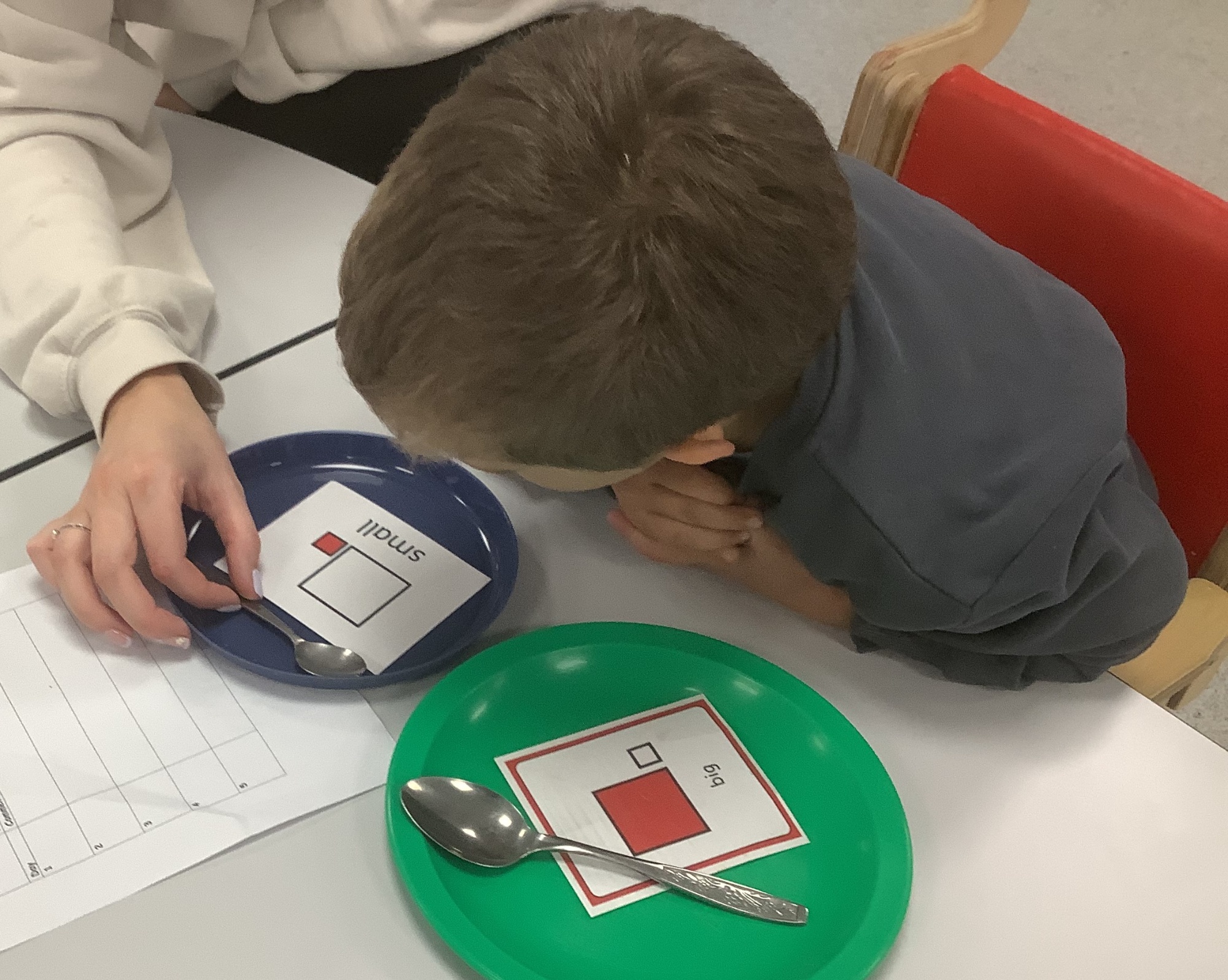
At Saxon Wood School we use Widget Symbols (PCS) range of symbols as they are clear and less abstract than other symbol systems. They consist of coloured line drawings that are more abstract than photographs but more concrete than signs.
Guidelines for Symbols used in School
-
Pupils require well-established skills in order to understand that symbols can be used as a means of communication. All pupils must:
- understand symbolic representation
- be physically able to point to a symbol by the use of their hands, eyes or some form of electronic system.
Symbols can be used to help pupils understand what is happening around them and to develop their expressive communication skills.
Symbols should only be used in real and relevant situations. As with all communication systems symbols should be introduced in situations where the pupil is highly motivated to communicate and where they have something they want to say: for example, ‘I want a drink.’
Staff should ensure that everyone uses the same symbol to represent an activity or object consistently.
Signs and Speech Cues
Signs and consistently used standardised phrases are also used as cues. Some examples of this type of cue used at Saxon Wood School include:
- “1, 2, 3, lights on / off” (before turning the lights on and off in the classroom)
- “(Named activity) has finished. It’s time for (next named activity)”.
- “Ready Steady LIFT!”
At Saxon Wood School we use a total communication approach, which means a range of strategies are used to support understanding and language development. Makaton recognises this and makes use of speech, facial expression, body language and voice tone alongside the use of sign. The use of all of these alongside formal signs ensures pupils’ are receiving auditory, visual and physical prompts to aid understanding. Music Cues
Set pieces of music are played before specific activities either within class or throughout the school.
Examples of musical cues at Saxon Wood School
- Music played before 'Hello'
- Music played to tidy up
- Music played before lunch
- Music played before leaving to go home
Touch Cues
Some pupils may have difficulties processing environmental cues, for example due to sensory impairments and may benefit from consistent use of touch cues to enable them to anticipate what is about to happen. These cues may be individualised, but must be used consistently by all adults working with the pupil. Adult’s should ensure the touch cues used with pupils are not on body actions they are likely to experience in different contexts as this could be confusing to the pupil. Examples of touch cues used at Saxon Wood School include:
Tapping the shoulder and stroking the arm to indicate to pupil they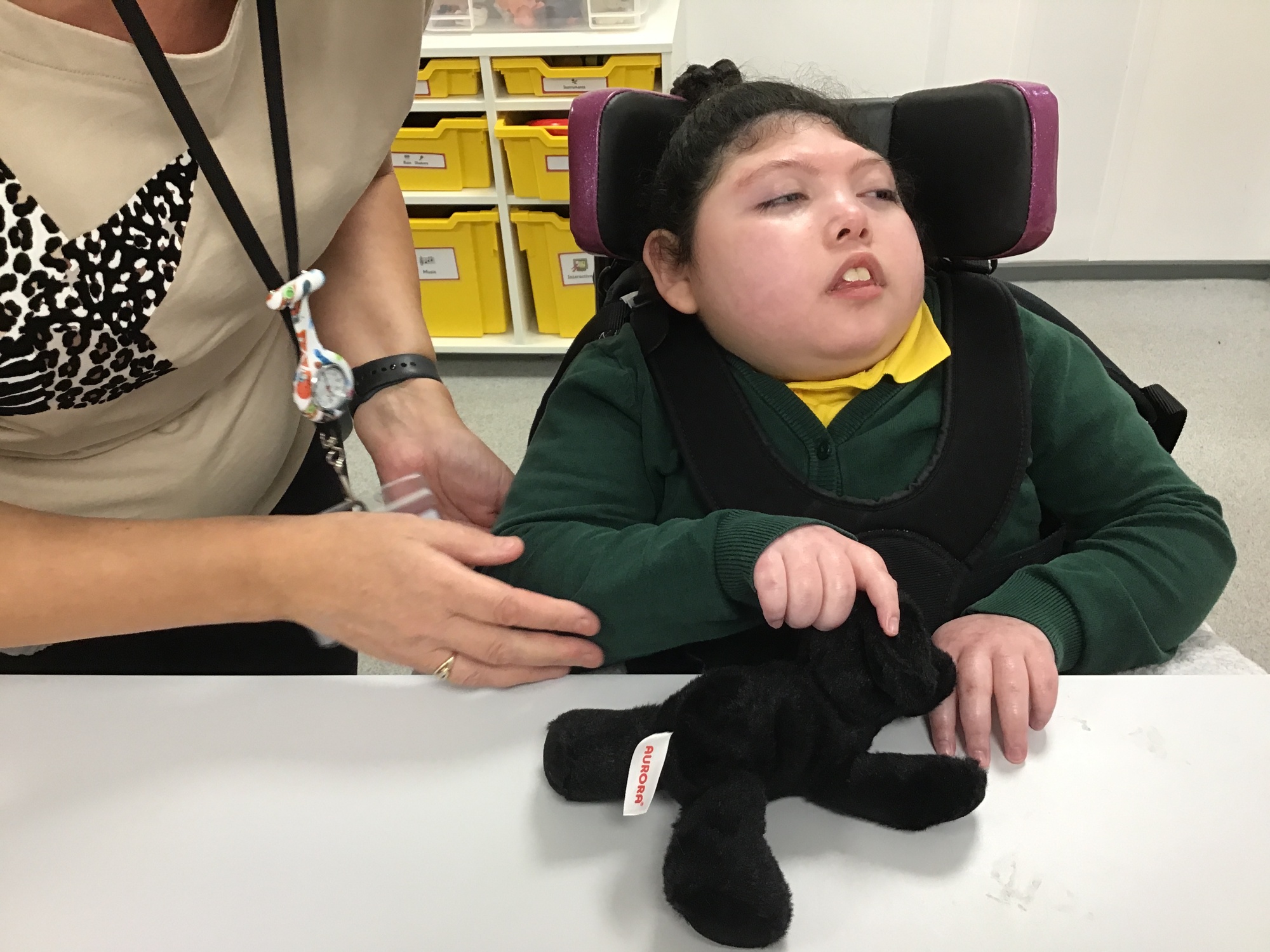
- Pressure motion down a pupil’s arms to indicate the activity is finishing.
- Call the pupil’s name and touch their arm to warn them about moving or something new that is going to happen e.g. another spoon of food.
Pupils with visual impairment may benefit from the use of body signing for example, using a long sweeping movement down the pupil’s shoulder to hand to indicate that something has finished.
Touch cues used with individual children should be recorded on their pupil profiles, to ensure consistency of use within class and as children transition between classes.
Creating a Communicative Environment
All pupils need to be part of a communicative environment.
This is an environment which...
- enables each pupil to access information about what is happening next
- allows pupils to make decisions
- enables each pupil to ask for an activity or object. This environment is created when:
- daily life is structured to enable routines to be established
- cues are used consistently to help anticipate routines; for example, the positioning of chairs in the classroom or music in the entrance denotes the start and end of the day
- cues are easily accessible to pupils
- adults, sensitive to communication from the pupils, are able to respond to any expressive signal from the pupil. Meaningful choices should be offered throughout the day. This encourages pupils to:
- make requests
- use eye contact, pointing, or words
- make decisions
- express their needs and interests
Choices can be about...
- What they want to play with e.g. Showing a pupil two objects and saying “Would you like to play with teddy or bricks?”
- What they would like to eat e.g. Showing a pupil two cereal boxes and saying ‘would you like to eat Weetabix or Ready Brek?’
- Who they would like to play with e.g. Showing a pupil two photographs of different people and saying ‘would you like to play with x or y?’
For some pupils making choices from two preferred items is difficult so it may be necessary to make a choice between a preferred and a non-preferred item or a preferred item and a blank card representing “nothing.” This can help pupils understand that the choice they make is important.
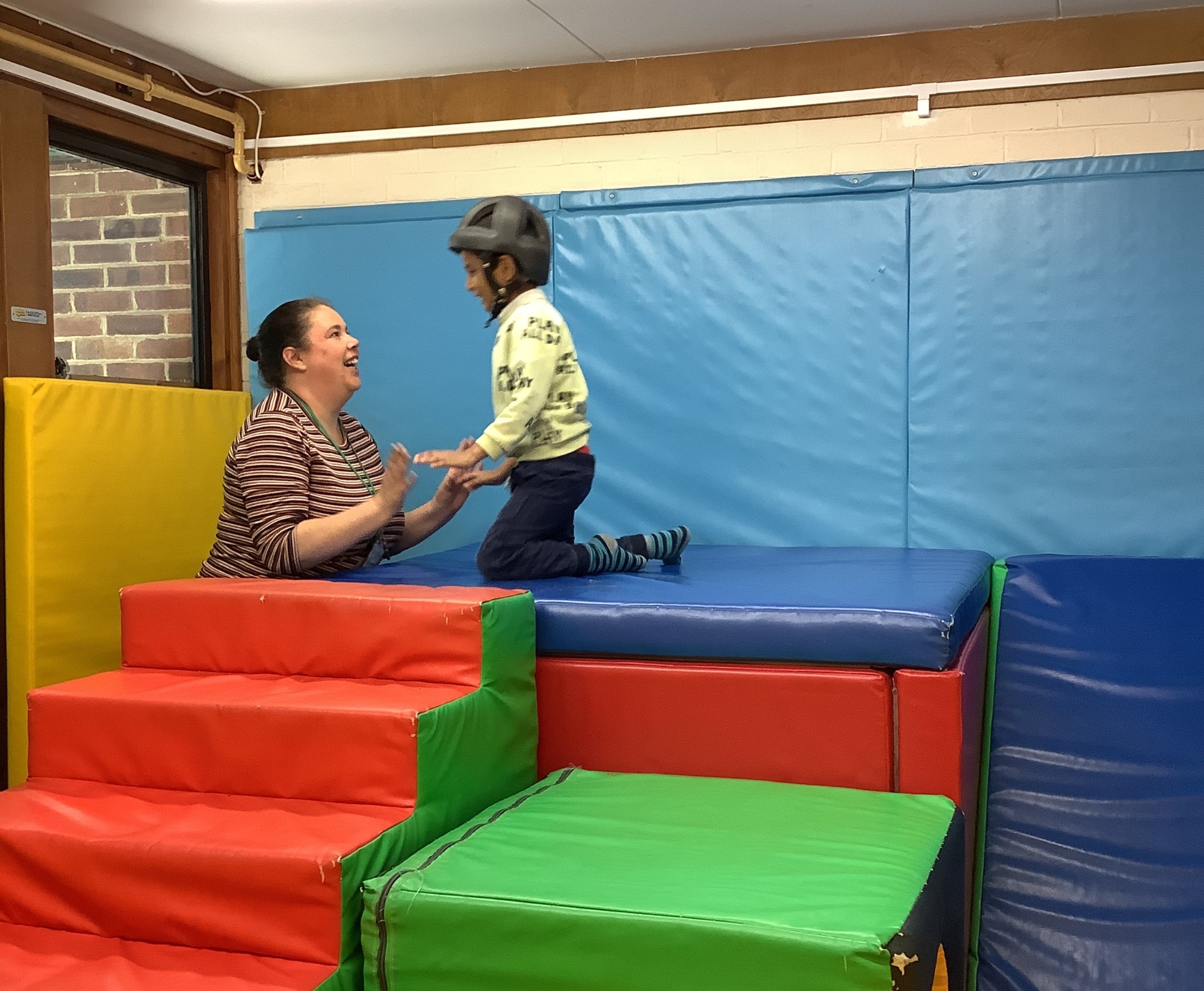 Intensive Interaction
Intensive Interaction
What is Intensive Interaction?
Intensive Interaction is an approach to working with people with learning difficulties which helps them to relate to others and begin to develop the fundamentals of communication (Nind and Hewett, 2001).
It is based on typical infant-caregiver interaction, through which early communication and sociability are learned in infancy through everyday interactions with caregivers. These typically consist of light hearted, face to face interactions involving eye contact, physical touch and responding to the sounds and facial expressions made by the infant. This captures the infant’s attention and motivates them to engage further with the adult and in this way the complex process of communication begins to develop.
Intensive Interaction makes use of these interactive games to teach those at the earliest stages of development the fundamentals of communication and sociability in a developmentally appropriate way (Kellet and Nind, 2003; Nind and Hewett, 1994).
During Intensive Interaction a repertoire of familiar ‘games’ can be developed, through which pupils begin to learn and rehearse communicative skills such as:
- Attending
- Exploring and interpreting facial expression
- Vocalising
- Anticipating
- Joint attention
- Turn taking
Adults make themselves available on the pupil’s terms and start by responding to and celebrating things the pupil does. Responding to the pupil’s signals as if they are intentional, even when they are at a pre-intentional level of communication, enables pupils to become active learners and begin to realise the message carrying possibilities of their movements, gestures and vocalisations (Corke, 2012).
Intensive Interaction at Saxon Wood School
At Saxon Wood School Intensive Interaction is carried out by teachers and teaching assistants. It can take place during 1:1 sessions both in and out of the classroom; during personal care times, in the playground or incidentally throughout the day.
Sessions vary in length from five to thirty minutes depending on the pupil and pupils may indicate when they want to stop.
Specific targets are not set for Intensive Interaction sessions, but follow the aims and principles outlined above. Staff should reflect on sessions in order to think about how pupils are responding and how interactions may be extended.
Non-Directive Communication
Comments: Undemanding language
- A description of what a pupil is doing
- Talking about what a pupil is looking at
- Talking about what is going to happen
- Reflecting what happens to a toy or object (block tower falls over – “Crash!”; pupil finishes meal – “All gone!”)
Expansions:
- Pupil looks at cup and says “juice” – you say “You want MORE juice?”
- Pupil pushes car along the floor and says “bbrrrm” – you say “the CAR says brum”
The purpose is to focus the adult’s attention and let the pupil know the adult is watching and listening. It provides a model of language relating to what the pupil is focused on (it ‘maps’ words onto objects, actions, etc.) and develops joint attention.
The Hanen three A’s
- ALLOW the child to take the lead by OWLing - Observe Wait and Listen
- ADAPT – make comments rather than asking questions
- ADD – expand and interpret
Principles of Non-Directive Communication
- Encourage comments and expansions: A description of what the pupil is doing or looking at
- Encourage specific praise: Ideally this would be “I really like what you’re doing” rather than “Good boy” (which may mean very little to a pupil)
- Avoid directives: Instructions, including requests such as “Put the blue block on the red block”
- Avoid too many questions: Fairly obvious what these are, but we often use them to fill gaps when working with non-verbal pupils, e.g. “What’s this?”
Minimal Speech Approach
All staff need to be aware that understanding spoken language is very difficult for many of the pupils at Saxon Wood School and that it is best practice to use short, clear, jargon free language when communicating with pupils. This will enhance their ability to focus on the key words in a sentence.
Picture Exchange Communication (PECS)
PECS is an approach used to develop a pupil’s expressive communication skills. At Saxon Wood School PECS is used with some pupils to teach them how to initiation communication, and at a later stage to teach sentence structure, extend vocabulary and possibly other concepts. In the later stages pupils are able to use PECS to make requests and make comments. PECS enables pupils to communicate with anyone in any environment.
Pupils are taught the stages of PECS progressively using any curriculum area. The teaching is dynamic and develops at an appropriate rate for each individual.
The decision to begin teaching this system will be made after the following:
- recommendation by a member of staff who has attended the two day workshop
- assessment by the speech and language therapist and their agreement that a picture based communication system would be of benefit
- discussion with, and approval from, the parents.
When beginning PECS the initial aim will be to find a number of reinforcing items for the pupil. These may be consumable (e.g. raisins, apples etc.) or motivating toys such as bubbles, balloons, water spray, spinning tops etc.
Once a range of items has been established pictures will be used to represent them. Depending on the needs of the pupil these pictures may be large/small, colour/black or white, or even representative of the real object e.g. crisp packet. Where a symbol is used it will be a Widget symbol where possible.
When first teaching this system two members of staff, who have been trained to use PECS, will work together to teach the physical exchange of a picture for a desired object. This is usually taught by a member of class staff and the speech and language therapists / assistant. Once the pupil becomes familiar with the system, this can be reduced and taught by members of class staff.
Each pupil will have their own communication book which must be available for their use at all times.
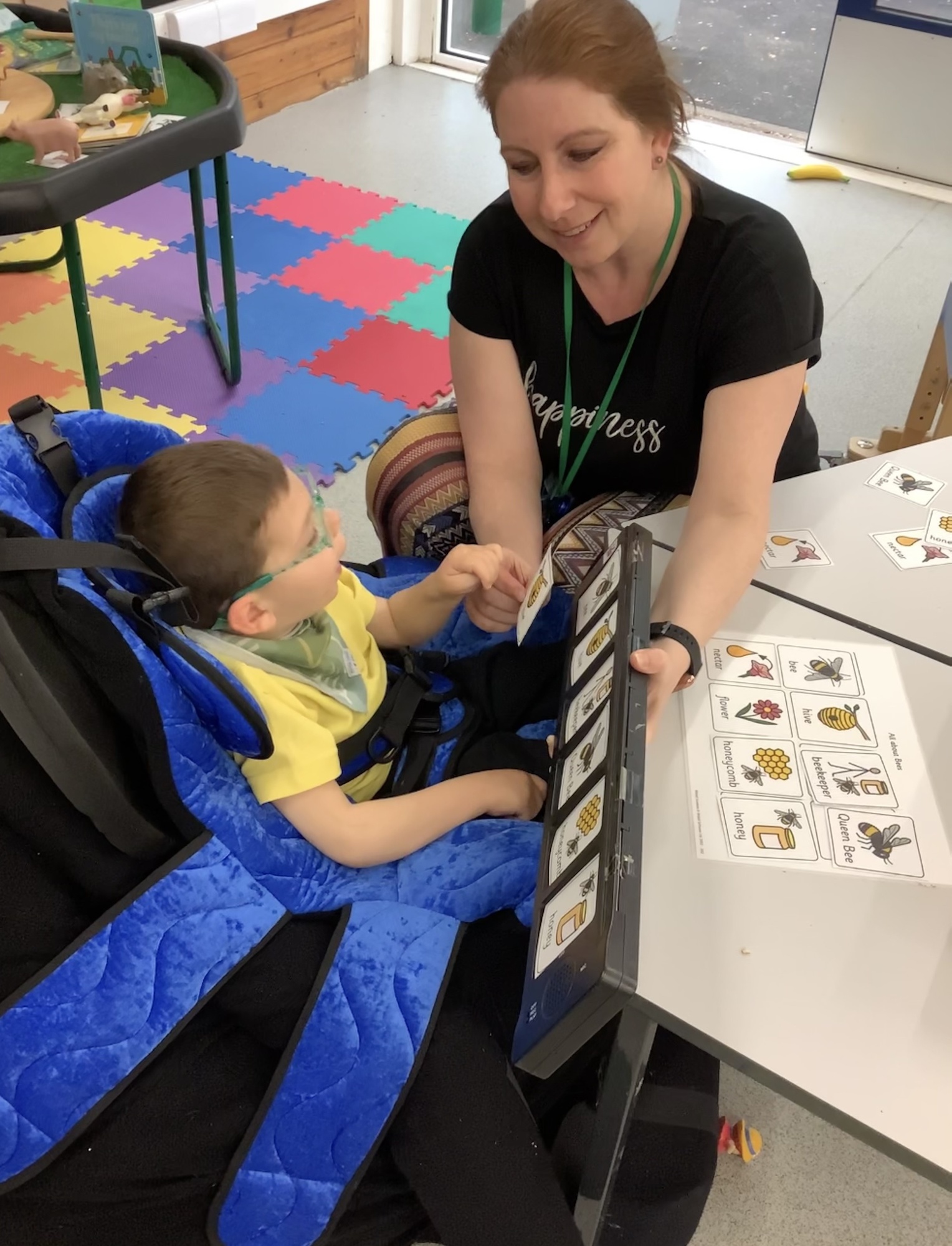 Aided Language Input (ALI)
Aided Language Input (ALI)
At Saxon Wood school ALI is used by staff across the school day to help develop the pupil’s language development. It involves the process of modelling Augmentative and Alternative Communication (AAC) language in everyday settings. The communication partner talks to the person while also pointing/ selecting keywords on the person's AAC system. ALI helps develop the person's understanding of language and symbols.
Communication Passports
At Saxon Wood School important information about individual pupil’s communication is displayed on the classroom walls on the “Communication Passport"

